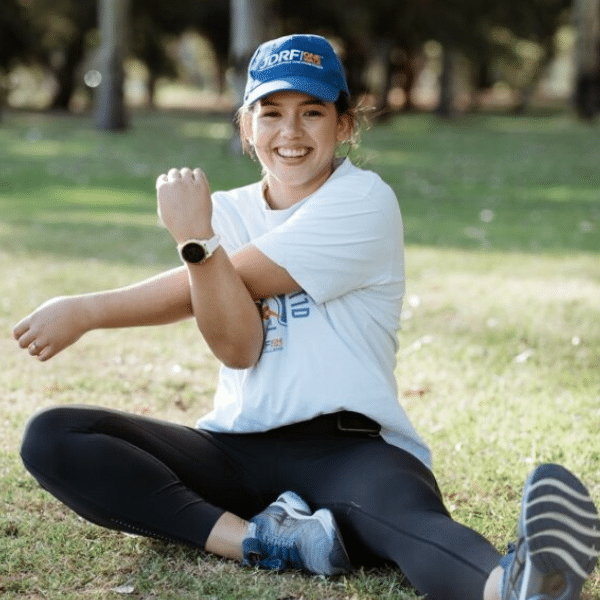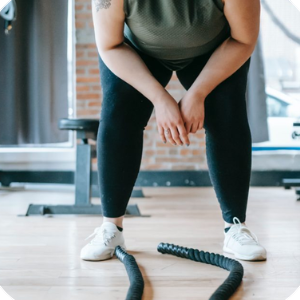Exercise with type 1 diabetes

Exercise is an essential part of a healthy lifestyle for every person. If you’re living with type 1 diabetes (T1D), exercise is an important part of your management plan. Here’s a guide to exercise and T1D.
How does exercise help type 1 diabetes?
If you live with T1D, you’ll know that you need an ongoing management plan developed alongside your care team. Exercise will often be an important part of your management plan, as it will help you maintain general health and help you manage your T1D.
To find out why exercise is especially important for people with T1D, tips for dealing with high and low blood glucose levels, and advice on safely starting to exercise, check out our video:
Benefits of exercise for type 1 diabetes
Aside from the general physical and mental health benefits of exercise, people living with T1D can also find that exercise helps to help manage their blood glucose levels. It also increases insulin sensitivity, meaning your body won’t need as much insulin to process carbohydrates after exercise. Keeping exercise as part of your T1D management plan will help prevent long-term complications and also help you see the benefits that exercise offers every person. This includes lower blood pressure, maintaining a healthy weight, reduced stress, increased strength and stronger bones, as well as a boost in energy.
How does exercise affect blood glucose levels?
If you’re living with T1D, it’s important to remember that exercising can impact your blood glucose levels, so you’ll want to check them before, during and after exercise. This way, you’ll understand what to eat and when to adjust your insulin. It’s worth noting down your blood glucose levels so you can track how your body responds to exercise and share this with your T1D management team.
Sometimes, certain types of exercise are associated with a drop in blood glucose levels. Check out our video, which explains how insulin and glucagon control the uptake and production of glucose and how they function during exercise.
Keep in mind that your blood glucose levels may actually rise with exercise. Learn more about why this happens during or after exercise and what people with T1D should be aware of while exercising in our video.
Type 1 diabetes and exercise for children
Exercise for kids with T1D is just important as it is for adults. And kids with T1D can exercise safely; it just takes some planning. Be sure to put an insulin plan into action that’s specifically written for your child and inform teachers, friends and coaches. This way, your child can balance their insulin-and-exercise relationship with the support of those around them.
Check out our video for general information to guide anyone supporting children with T1D through exercise. It will help them understand the impact of exercise on blood glucose levels and any warning signs to look out for.
Achieve weight loss goals
Being active is an essential part of losing weight, along with a healthy diet. If you are trying to lose weight while living with T1D, this video contains some important considerations from the experts.
Ramp up your performance: advice for more advanced athletes
For people with type 1 diabetes who are competing in athletic events, glucose control can have major effects on peak strength, stamina, speed and agility. This video will set athletes with type 1 diabetes up for success and get them prepared to pursue their chosen sport.
More resources on exercise and type 1 diabetes

Nutrition and exercise for adults with T1D
Who doesn’t love food and getting out there and getting active? An excerpt from a nutrition and exercise session designed for adults living with T1D.
Read our guide
Exercise and type 1 diabetes: World-first guidelines consensus
In 2019, T1D experts from around the world provided consensus for the first time on managing blood glucose levels safely while exercising. Read more about the findings & recommendations.
Read the exercise blog
How to lose weight safely with type 1 diabetes
Learn how to safely lose weight with Type 1 Diabetes including diet, glucose monitoring & staying active.
Read our guide
How Hayley gained the confidence to exercise after her diagnosis
Read the blog by Hayley Ford, a T1D community member and passionate exercise advocate.
Read the story
5 things you might not know about T1D and exercise
Read the blog by Sam Rooney, an accredited exercise physiologist (AEP) who has been living with type 1 diabetes for 22 years.
Read the story
Sarah Marriott’s journey with T1D & playing competitive sport
Read how Sarah manages the condition when rowing competitively and her advice for anyone living with T1D who wishes to pursue their love for sport.
Read the story